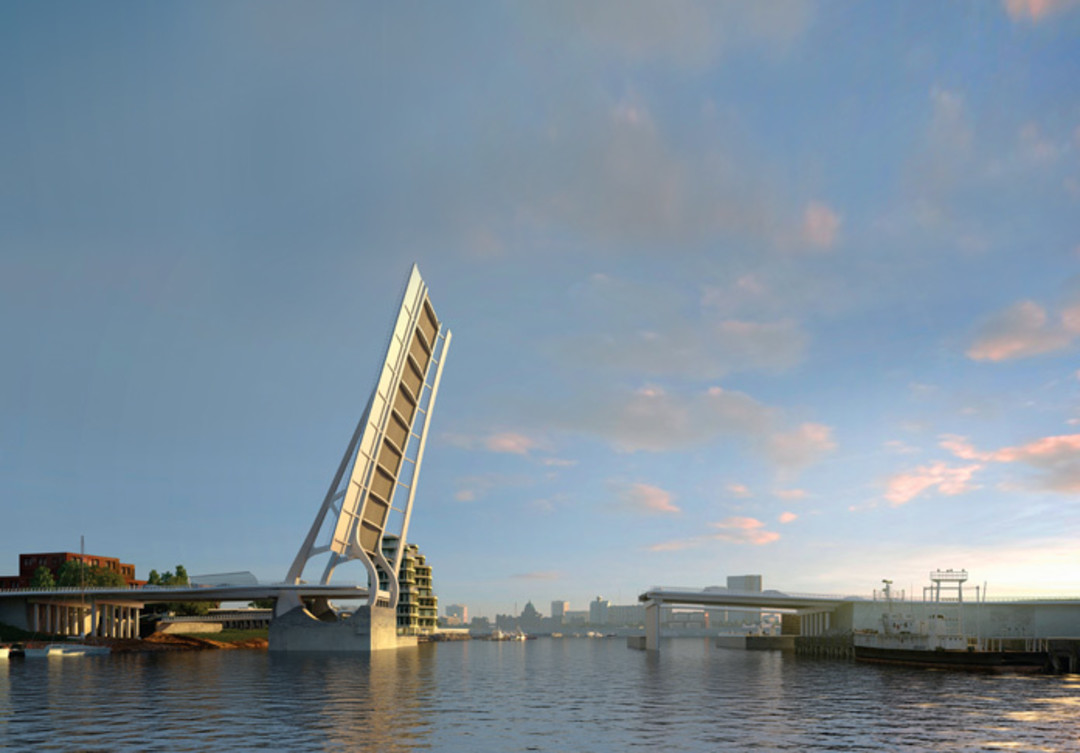We Need To Replace the Burnside Bridge. Should it Look Like This?

The new design for Victoria, British Columbia’s soon-to-be replaced Johnson Street Bridge
Image: Courtesy City of Victoria
Someday, the Cascadian Subduction Zone earthquake will shake for eight minutes or so and—among other things—topple or damage most of Portland’s bridges. (By 2016, we’ll have just three spans ready for a major quake: Tilikum Crossing, Sellwood, and—should you want to seek refuge in a corn maze—Sauvie Island.)
Multnomah County, which manages most of central Portland’s bridges, will soon outline a repair plan for the next 20 years. Certain to top the list: the Burnside Bridge. The equally certain recommendation: tear the current span down, and build a new one.
Preservationists will gasp. The 1926 double-leaf bascule (having two hinged lifts) bridge is on the National Register of Historic Places—to say nothing of the globally legendary skateboard park concealed below its eastern end. But seismic pragmatists won’t blink: designated by the state as an “Emergency Lifeline Route,” Burnside Street would provide the clearest path for moving relief supplies between east side and west side, according to Multnomah County spokesperson Mike Pullen. Bridge retrofits rarely get federal or state money, Pullen adds, but a new bridge could net Uncle Sam’s precious dollars. (The feds paid 11 percent of Sellwood’s $307.5 million price.) And engineers widely agree: the safest, most resilient bridge will likely result from a new design, not a remodel.
So skip “Can we save it?” for “What’s next?” The world is full of innovative lift bridges. The geographic symbolism is potent: at Burnside, Portland’squadrants converge on a span connecting one of the region’s longest streets. For inspiration, we might look to the new design for Victoria, British Columbia’s soon-to-be replaced Johnson Street Bridge. Like Burnside, the old bridge used a bascule design patented by Joseph Strauss, designer of San Francisco’s Golden Gate. For its replacement, England’s Wilkinson Eyre—renowned for London’s eye-shaped Gateshead Millennium Bridge—designed a curvilinear, single bascule that will allow pedestrians to saunter through the “rolling wheel” that turns as the bridge opens.
There are other, less bold options: Seattle’s new South Park Bridge, for example, could be a Burnside stand-in. The question is: should the center of our city look like the future, or the past?




